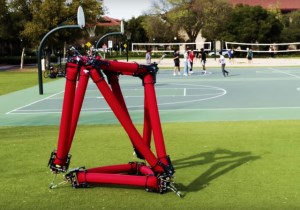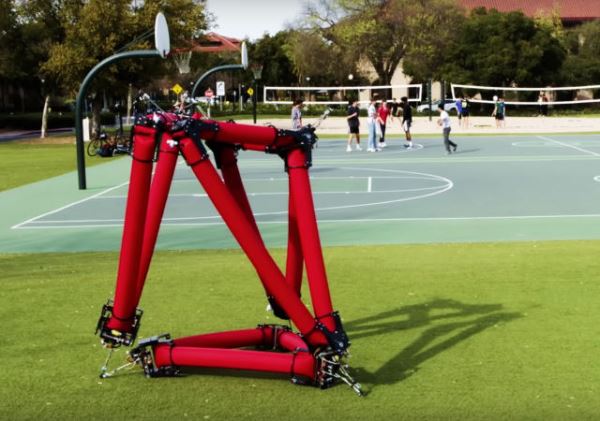Inspired by the octopus which can change its shape and fit into small spaces, Stanford University engineers have developed a new shape shifting “Transformer” robot.
Stanford University engineers recently “pumped up” their latest creation, turned on a few small motors and watched it move across a university green.
The soft robot's skeleton is built with flexible fabric tubes filled with air. Small motors move along the tubes to change the robot's shape and allow it to move.
The tube runs through three small machines that pinch it into a triangle shape. One machine holds the two ends of the tube together while the other two drive along the tube to change the shape of the robot by moving its corners.
The researchers call it an "isoperimetric robot" because the total length of the edges and the amount of air inside remains the same even though the shape changes dramatically.
"What's exciting to me is that the robot is actually a collective of individual robotic rollers, which work together to move the robot and change its shape," says Mac Schwager, assistant professor of aeronautics and astronautics at Stanford. "This helps make it an adaptable and robust system."
The researchers published a paper in Science Robotics last week about their new invention.
Unlike many soft robots that have to be connected to an air compressor, this human safe robot is untethered.
To make a more complex version of the robot, the researchers attach several triangles together. By coordinating the movements of the motors, the robot can pick up a ball by engulfing it on three sides or altering its centre of mass to roll forward.
This design also allows the machine to surround an object, pick it up, and move it around, a task that is much more difficult for robots that use a gripper to do the same thing.
Researchers say the robot could be a good candidate for space travel because of its flexibility and the fact that it can be compressed to a small size.
Traversing complicated environments
"On another planet, it could use its shape-changing ability to traverse complicated environments, squeezing through tight spaces and spreading over obstacles," says Zachary Hammond, a graduate student in mechanical engineering at Stanford who works on the robot.
The team combined design principles from several types of robots to create this new invention: soft robots, truss robots and collective robots. Soft robots are lightweight and compliant, truss robots have geometric forms that can change shape and collective robots are small robots that work together.
Robotics researchers are looking for ways to build more human-friendly robotics.
Traditional industrial robots are fast, precise systems, based on rigid-body mechanisms, which are built for factories, not interacting with humans.
Soft robots are built from materials with mechanical properties similar to humans and animals.


